Part 1, Part 2, Part 3, Part 4, Part 5
The Holocene Mass Extinction: It's big, it's bad, the world is screwed. 10% of all extant species are at risk of extinction over the next century. The species that aren't threatened with immediate extinction are often in bad shape: The global seabird population has dropped by 70% since 1950, and 90% of the large bony fish in our oceans by biomass have been fished out over the last century, for example. So what can we do to keep things from getting even worse?
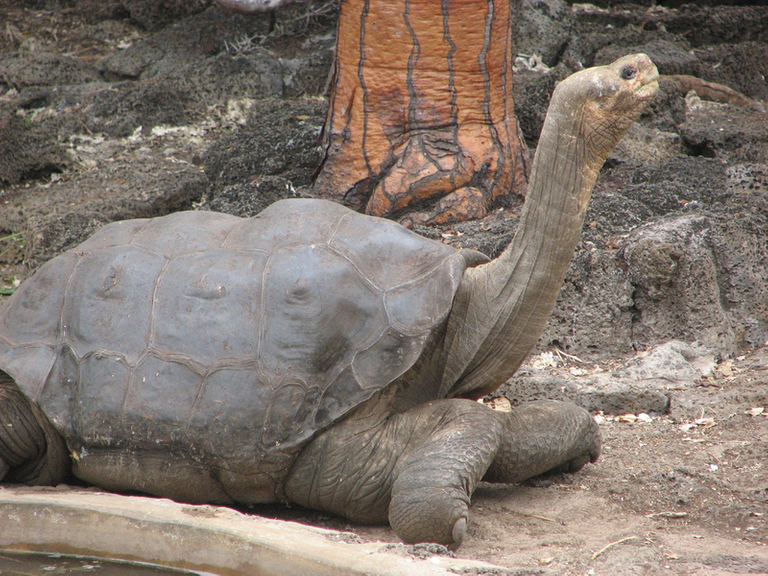
Lonesome George, the last Pinta Island Tortoise, passed away on June 24, 2012, aged 102. He'd been the last member of his species for over 40 years before his death. There are hopes of reviving his species still- plenty of his genetic material was preserved, and a population of turtles of a different species that appear to have interbred with the Pinta Island Tortoise have been found. [Image source]
There are a few effective strategies. The first, and the most effective, is establishing nature preserves. Nature preserves, apart from giving endangered species a safe haven, also improve the populations around them- breeding species spread out from the preserve into less protected regions. It's a lot more complicated than simply creating nature preserves, though. Choosing how those nature preserves should be laid out is an understandably difficult question. Apart from the various corporations and interests opposing them, there's a lot of conflict even among their supporters. Having more space for a nature preserve is definitely better, but how should it be organized? Into one large preserve or several small?
It turns out that one large is generally better than several small. The science of island biogeography, which I've discussed before, states that a smaller area supports a smaller population, which thereby becomes more vulnerable to threats- the population in the larger area is more resistant to the same threats. This can easily be seen by the fact that there is a very direct relationship between the size of a habitat and its species biodiversity. However, it's often much more difficult to build larger nature preserves. There's a stopgap measure that can be employed in the building of habitat corridors- narrow stretches of that habitat connecting these smaller areas. They can often take the form of roads running on overpasses across habitat, allowing wildlife to pass beneath them. We've even built overpasses as the actual habitat corridor, running over the road. Habitat corridors are especially useful in heavily developed regions. They are, however, much less effective still than simply having larger preserves.
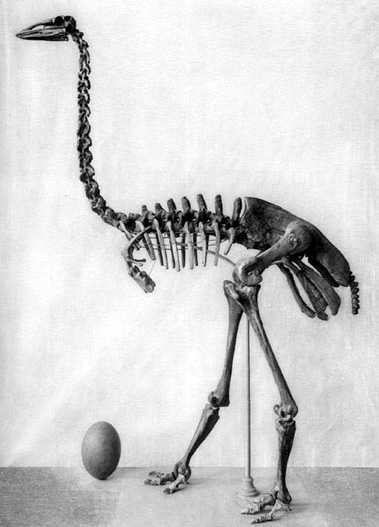
The Elephant Bird of Madagascar. This bird, most closely related to the tiny kiwi birds of New Zealand, grew up to 10 feet tall, weighing in at over half a ton. The species had been driven extinct by the 17th century. It's commonly thought to have been the basis for the legend of the roc, the mythical giant bird from the Thousand and One Nights. The extinction of the elephant bird has resulted in a number of Madagascar fruit trees being threatened as well- their huge, nearly impenetrable fruit evolved to be dispersed via the bird through its digestive tract. Wiped out by hunting, egg poaching, and potentially diseases from domestic fowl. [Image source]
While preventing or repairing habitat damage is the most important part of preventing extinctions, there are a lot of other methods we can take. Invasive species spread can be mitigated, for instance. The difficult part is that most invasive species require individually attuned methods to keep them from spreading, and we don't always know how they're going to spread until they already have.
With climate change related extinction pressures, we've got good news and bad news. The good news is that the most effective course of action in mitigating them is just fighting climate change. The bad news is that the most effective course of action in mitigating them is fighting climate change effectively.

Achatinella abbreviata, a Hawaiian tree snail declared extinct in 1990. It, and at least seven other species, were all devoured and driven extinct by the invasive rosy wolfsnail, which sucks smaller snails out of their shells and devours them whole. Ironically, the rosy wolfsnail was introduced to control the also invasive and plant extinction causing Giant African Land Snail, which is deadly to crops and can spread bacterial meningitis to humans. Unfortunately, while the rosy wolfsnail eats some of their intended prey, the smaller native species are just much easier prey. [Image source]
Sometimes, despite everything we do, a species is simply impossible to preserve in the wild. If you take a look at the lists of recently extinct species, you'll note that a number of them are listed as extinct in the wild. We've had to relocate a great many species to zoos, botanical gardens, and other centers for wildlife preservation.
Of course, sometimes even that's not enough. We've actually started storing genetic material in gene banks around the world for the purposes of de-extinction. There's two main methods of de-extinction. The first, which I've mentioned in several of the previous posts, is simply breeding the species back into existence. This can only be done when a species was bred out of existence via hybridization. The second and flashier method is by cloning. We can only clone species with well preserved DNA, which degrades quickly, so dinosaurs are out of the question. Woolly mammoths have been found preserved in ice, and so are a real possibility. Many other species DNA have been preserved this way as well.
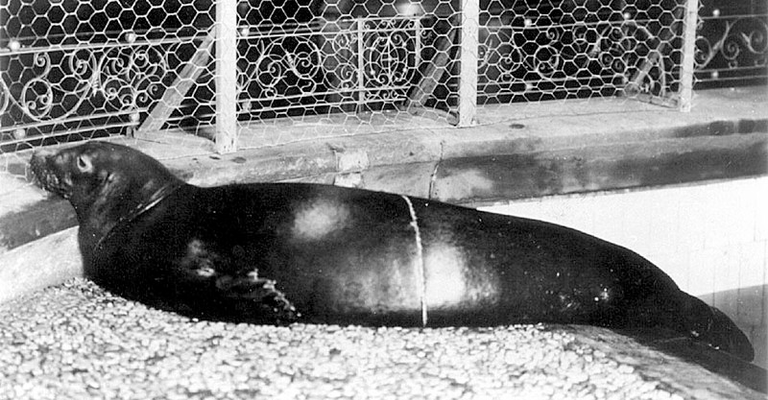
The Caribbean monk seal, last seen in 1952. Driven extinct by overhunting of the seal and overfishing their food sources. Two related species, the Hawaiian and Mediterranean monk seals, still exist, but both are badly endangered and face extinction themselves. [Image source]
There are some serious issues with de-extinction, however. First off, we're incapable of reviving most recently extinct species. We simply don't have any of their genetic material- it's only recently that we've begun collecting it. Even now that we are, we fail to gather it from many endangered species before they're driven extinct. What's worse, we're not guaranteed success at cloning all of the species we have preserved- we don't understand the ecology and lifecycle of all the species preserved well enough to revive them successfully. Finally, the extinction causes for many de-extincted species are still there. They simply won't be able to survive in the wild.
All of this list so far has been about what society can do. There's not much in there about what we as individuals can do. If you're interested in helping, though, there are tons of ways you can do so.
- Donate to an environmental charity. There are tons of them, and they have missions as varied as supporting scientific research, preserving endangered species in captivity, and even helping specific species. If you're interested in this option, and don't have a charity in mind, let me know, and I'd be happy to help you choose one that you think is worthy of your support.
- Live a more environmentally friendly life. Shrink your carbon footprint by using more energy efficient appliances, taking public transit, etc. Recycle more. You all know the drill.
- If you have land of your own, establish a wildlife sanctuary on it. You don't need a huge farm to do this, you can do this in your own backyard. Grow native species of plants in a garden, and it'll act as a tiny wildlife preserve not only for the plants, but for birds, insects, and other small species that depend on them.
- Educate yourself about the current environmental crises facing the planet. My bibliographies for this series are filled with books and other resources on extinction- I highly recommend starting with Elizabeth Kolbert's Pulitzer Prize winning The Sixth Extinction.
- Take political action. Join environmental marches and protests. Sign petitions. Contact your local government officials. Most importantly, don't vote for politicians or parties that support environmentally unfriendly policies, and email them to let them know that. Don't just rely on the reputation of the political party, however- many politicians pay lip service to environmental causes and then help business interests damage the environment. Research their individual environmental records- there are plenty of third party resources that rank politicians on their records on various issues.
- Boost the signal. Help let everyone you know about these problems, even if all you're doing is sharing a news article about a species that just went extinct.
- Don't lose hope. We've got to keep fighting if we want to make things better.
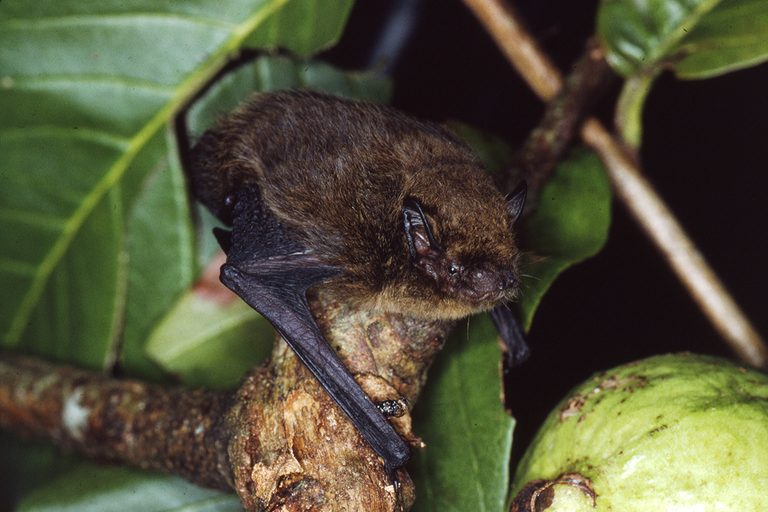
The Christmas Island pipistrelle, one of the most recent species to go extinct. The last living member of the species was seen in 2009, and they were officially declared extinct just a few months ago. Driven extinct by a combination of invasive predators, habitat loss, and insecticide poisoning. [Image source]
Bibliography:
The Sixth Extinction, by Elizabeth Kolbert
The Song of the Dodo, by David Quammen
Recovery plan for the O'Ahu Tree Snails of the Genus Achatinella, published by the US Fish and Wildlife Service
https://www.dailykos.com/stories/2018/1/6/1730199/-After-60-million-years-of-extreme-living-seabirds-are-crashing?detail=emaildkgre
https://en.wikipedia.org/wiki/De-extinction
https://en.wikipedia.org/wiki/Extinction
https://en.wikipedia.org/wiki/Wildlife_corridor
https://en.wikipedia.org/wiki/Habitat_fragmentation
https://en.wikipedia.org/wiki/Habitat_conservation
https://en.wikipedia.org/wiki/Lonesome_George
https://en.wikipedia.org/wiki/Elephant_bird
https://en.wikipedia.org/wiki/Achatinella_abbreviata
https://en.wikipedia.org/wiki/Caribbean_monk_seal
https://www.newscientist.com/article/2147477-christmas-islands-only-echolocating-bat-has-gone-extinct/?utm_campaign=Echobox&utm_medium=Social&utm_source=Twitter#link_time=1505393328

You received a 60% upvote since you are a member of geopolis.
To read more about us and what we do, click here.
If you do not want us to upvote and comment on your posts concerning earth and earth sciences, please reply stop to this comment and we will no longer bother you with our love ❤️ https://steemit.com/geopolis/@geopolis/geopolis-the-community-for-global-sciences-update-1
Thanks for ruining my day. I'd flag you if I hadn't already upvoted you.
hehehehehe
Am I the only one who saw Jurrasic Park?
loving your posts and the concise no nonsense way you put it across. this could be such a cool platform to start ides that make a change.
Thanks!
That's a thing I'm really worried about. It's so sad, we kill off some species before we even notice them and get to know them... I was thinking about doing some guerilla gardening this year to help the insects
You definitely should! And yeah, we've lost so many species before we've even discovered them. It's normal today to discover a species and have it be already at critically endangered status.
Stellar write up. I am falling in love with your presentation of the information!
Great to see you at the Steem Engine! It's an awesome group I am proud to be a part of :)
Thanks!
A really amazing post and so well written. Thanks heaps! I love would never have guessed about the efficacy of one large protected population being better than many small ones, or that the kiwi had a massive relative.
I guess we just have to all try to move in the right direction, day by day, and encourage others to do the same too!
Exactly! Every little bit counts.
The protection of wildlife is of paramount importance. Humans have a habit of disrupting the ecosystem, take take take is what we do best. If we want our grandchildren to enjoy the beautiful surroundings and species that we can see today, we must all do more to sustain the environment and the creatures living in it
Exactly!
Very good contribution friend is good to create awareness in people a good post greetings ..!
Thanks!
Great post. Most likely extinction on known/ bigger species easily catch our eyes. Some unexplored/unknown species also undergo extinction. Even in microscopic level for that matter. Hope at least we be a little more responsible in keeping the endangered species safe.
In my opinion even though steps are taken to preserve generic materials of these species it may not be that simple to get them back against the rule of nature.
Your Post Has Been Featured on @Resteemable!
Feature any Steemit post using resteemit.com!
How It Works:
1. Take Any Steemit URL
2. Erase
https://3. Type
reGet Featured Instantly – Featured Posts are voted every 2.4hrs
Join the Curation Team Here
@originalworks
It’s very hard and sad to watch what is happening with wild animals today.
Sometimes I wish it wouod be us the humans instead, not animals to extinct from this world.
Great educational post!
Thanks!
haloo...my name is mawarlinda...upvote me please...thank..
Don't spam or beg for upvotes, it's rude. Instead, you should try and comment on the specific topics of the posts you're replying to.
eeemmmm..oke thank..
if cryogenesis really worked, it would be a great solution... it's a shame it's a big lie!
Well, it works great on fertilized eggs and other genetic material, as well as a couple species of frogs- we'll get it figured out eventually.
At first glance I thought, huh, The Pinta Island Tortoise looks like the Mario 64 cave beast...
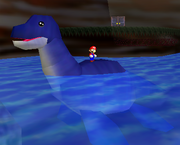
Hah, nice! Though that being said, the cave beast looks more like a pleciosaur, an extinct marine reptile that lived alongside the dinosaurs.
Also the pinta island tortoise had a shell and is honestly more koopa-like to be honest...
Thanks for reminding everyone about extinctions. We all need to be reminded from time to time.
It's perhaps one of the worst things mankind has ever done to this planet and its a damn shame.
Just the way the universe itself is being haunted by man....so also is wildlife...thank you for the education on extinction of wildlife and endangered species..
what you dedicate adds insight to my knowledge, thank you sir
Great post. As you said, storing DNA or even wildlife reserves are useless if we don't tackle the global warming problem (not to mention plastic in the oceans, destruction of primary forests...). An interesting ethical question would also be: should we even try to artificially save species that have no natural habitat anymore ?
in my garden, I managed to attract many birds and insects that are endangered in France.
yes!! many thanks for disseminating this information !
Congratulations! This post has been chosen as one of the daily Whistle Stops for The STEEM Engine!
You can see your post's place along the track here: The Daily Whistle Stops, Issue #21 (1/19/18)
The STEEM Engine is an initiative dedicated to promoting meaningful engagement across Steemit. Find out more about us and join us today!